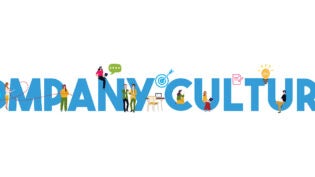Workforce Diversity in Construction Improves Productivity and Profits
By: Redshift

The construction business gets a bad rap for not being diverse enough. True, the sector may lag behind other industries, but construction companies are beginning to foster a more diverse and inclusive workforce—and earn the returns.
The business case for diversity demonstrates that it boosts employee engagement, job satisfaction, and performance. In the 2018 report “Delivering through Diversity,” McKinsey finds that firms with diverse executive teams are up to 33 percent more likely to outperform their competitors.
Diversity and inclusion (D&I) initiatives can also deliver intangibles such as innovative ideas and creative problem-solving. Diverse perspectives quash companies’ tendencies to do things the way they’ve always been done and reduce the risk of groupthink.
“As diversity increases in our industry, we will see increases in productivity because we will see new ideas being brought forward,” says Jennifer Suerth, vice president of technical services at Pepper Construction Company, where 30 percent of employees are women.
Productivity gains begin when companies step up recruitment and retention and improve workplace D&I. The result is a more efficient and effective workforce where all employees are supported to work to their full potential.
Productivity at Risk
Despite being one of the largest sectors in the global economy, the $10 trillion construction industry has fallen behind in productivity growth, which slowed to 1 percent last year. The result: poor performance, project management, and execution, as well as cost and time overruns.
The problem can only get worse in the United States, where construction’s contribution to the economy has hit a seven-year high point, yet companies complain about a shortage of skilled workers.
Recruiting talent from underrepresented groups is a business imperative. Global advisory Willis Towers Watson predicts that limited workforce diversity will be a top 20 risk for construction firms through 2027. “Diversity begets diversity,” says Bill Noonan, head of North America Construction-Client Engagement. “Unfortunately, the opposite’s true, too.”
D&I Sadly Lacking
Recent surveys indicate that the industry has a long road to a diverse workplace. Equality, diversity, and inclusion (EDI) professionals across many global locations identify several underrepresented and protected groups. In the UK, the Equality Act includes nine protected characteristics that employers must consider: age; disability; ethnicity (often cited as a focus on inclusion of black, Asian, or minority ethnicity [BAME] individuals and groups); gender; gender identity or transgender; sexual orientation; religion and belief; marriage and civil partnerships; and supporting maternity and paternity provisions (or family-friendly policies).
Across each area, metrics and benchmarks can be problematic. In 2016, just 3.2 percent of UK building-industry employees identified as BAME, and less than 5 percent of the construction workforce declared a disability. This does provide a marker to organizations to see if they reflect these talent communities.
In the United States, women make up just 9 percent of the construction workforce. In 2017, women held just 7 percent of construction-management jobs in the United States, though it’s nearly twice that in the United Kingdom. Suerth says she didn’t think of herself as a minority until she moved from a woman-led engineering office to the predominantly male construction industry, where she turned an obstacle into an opportunity. “Working as a woman in construction and with technology is doubly rare,” she says.
Barriers for the LGBT community are also prevalent. In the United Kingdom, LGBT professionals comprise just 2 percent of the construction workforce. In 2016, 51 percent said their sexual orientation prevented them from progressing in their careers and 71 percent had heard repeated LGBT-oriented insults at work. Not surprisingly, only 7 percent of LGBT workers would recommend the industry to recruits. (LGBT workforce data is not collected by US-equivalent agencies.)
Changing these demographics calls for changing attitudes. “People being able to be authentic at work enables them to flourish,” says David Isaac, partner and head of the advanced manufacturing and technology sector at the international law firm Pinsent Masons. “This is an opportunity to get the best talent into the business, and that translates to the bottom line. That is a compelling case, whether for LGBT, gender, or black, Asian, and minority ethnicity inclusion.”
Producing a Cultural Shift
Construction companies have committed to initiatives designed to foster D&I, often packaged in EDI action plans. These programs include focus groups, coaching, training, and mentoring, as well as networking and career development.
Mott MacDonald Group EDI manager Richard Chapman-Harris says unconscious-bias training has opened a dialog around more inclusive language and behavior. Reverse mentoring that pairs senior leaders with junior colleagues who are disabled, BAME, and/or LGBT has also given leaders insight into minority experiences and supports career progression for mentees from underrepresented groups.
“Our EDI Action Plan has helped the business to focus on key initiatives that support an inclusive culture, which we know takes concerted and collaborative action,” Chapman-Harris says. “Inclusion, unfortunately, doesn’t just happen.”
EDI actions have produced a cultural shift at Mott MacDonald, with 81 percent of UK staff feeling that their colleagues take EDI seriously, and 72 percent saying EDI policies are effectively implemented. EDI policies have also been adopted by clients, contractors, and suppliers. “We see EDI aspects embedded in our client tenders,” Chapman-Harris says. “We are also in turn increasing our expectations with our own supply chain.”
Support for Individuals
For individual employees, change comes slowly. Isaac, a past chair of Stonewall (Britain’s leading LGBT charity) says, “There are not a lot of LGBT people in management positions now. It’s also important that other people in leadership positions act as allies. Stonewall has found that senior allies have been instrumental in driving change.”
Employee networks support inclusivity in all aspects of the industry and provide safe haven for dialog among minority professionals—including LGBT staff and their straight allies. Jamie Olsen Ferreira, an associate in the construction and engineering department at Pinsent Masons and cochair of the LGBT construction and infrastructure network Off Site says these networks have provided assistance and encouragement to major construction companies in the launch of their own internal networks.
Real Return on Diversity
Competitive advantage may ultimately go to companies whose workforces look more like the communities where they work. At Transport for London (TfL), the authority responsible for one of the largest capital-investment programs in the world, Isaac has observed Mayor Sadiq Khan’s commitment to diversity. “His commitment percolates down,” Isaac says. “It is a very diverse workforce that extends to the projects on the ground and helps create a conducive working environment where people are very effective.”
D&I infuses organizations with new ideas, fresh perspectives, and a willingness to consider alternatives. With a more diverse workforce that is better at problem-solving and decision-making, construction companies can outperform their peers, financially and fairly—with inclusion and respect.












